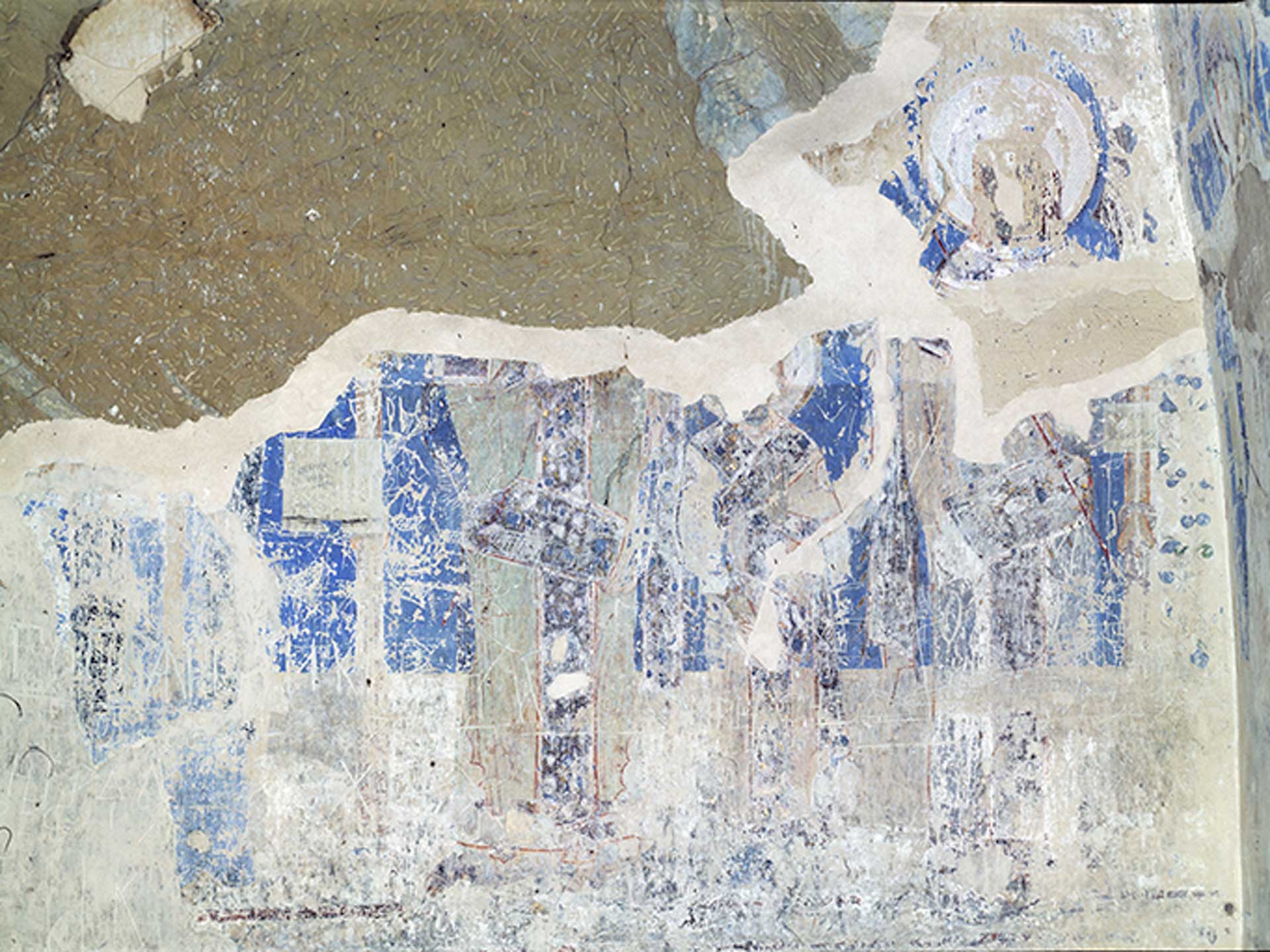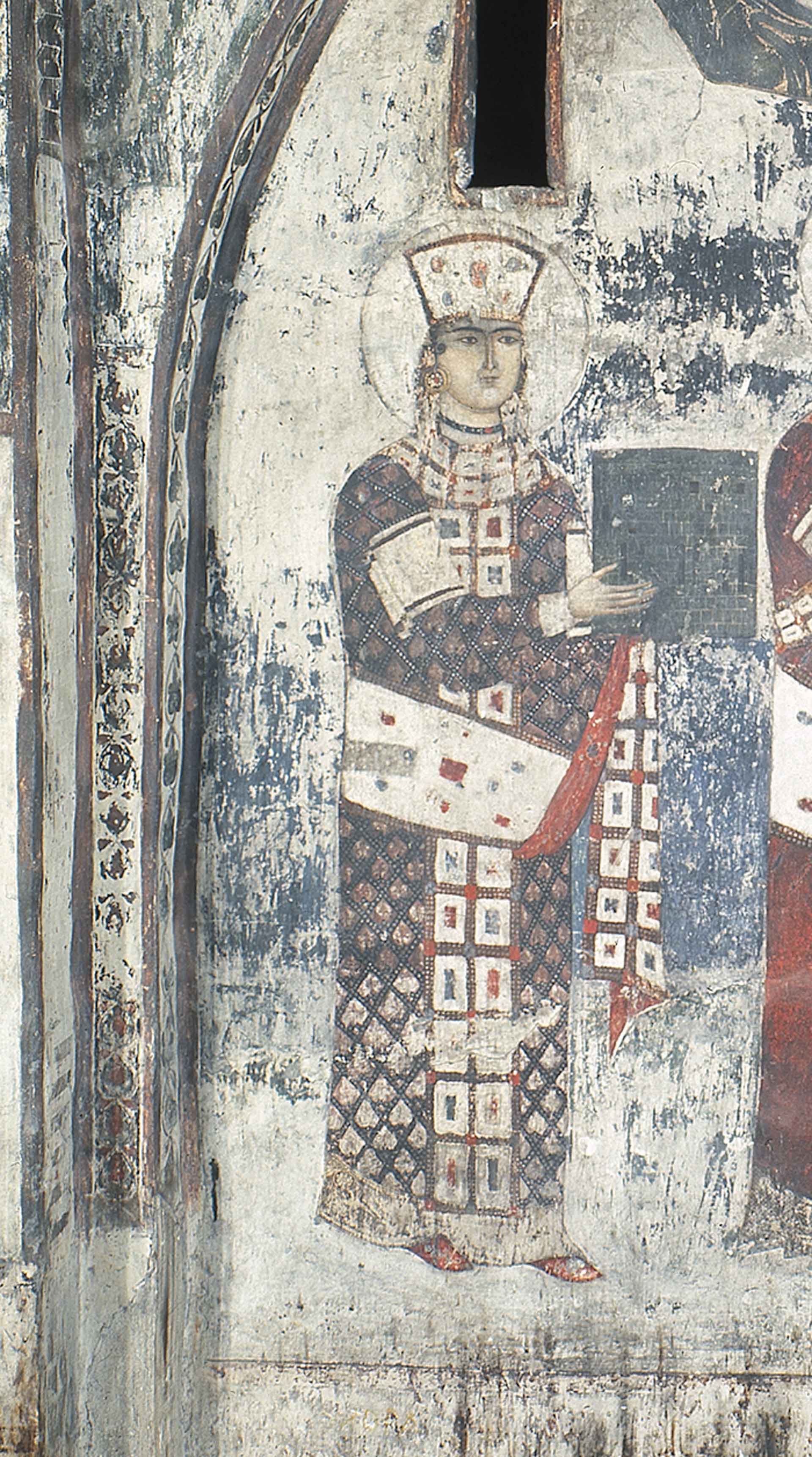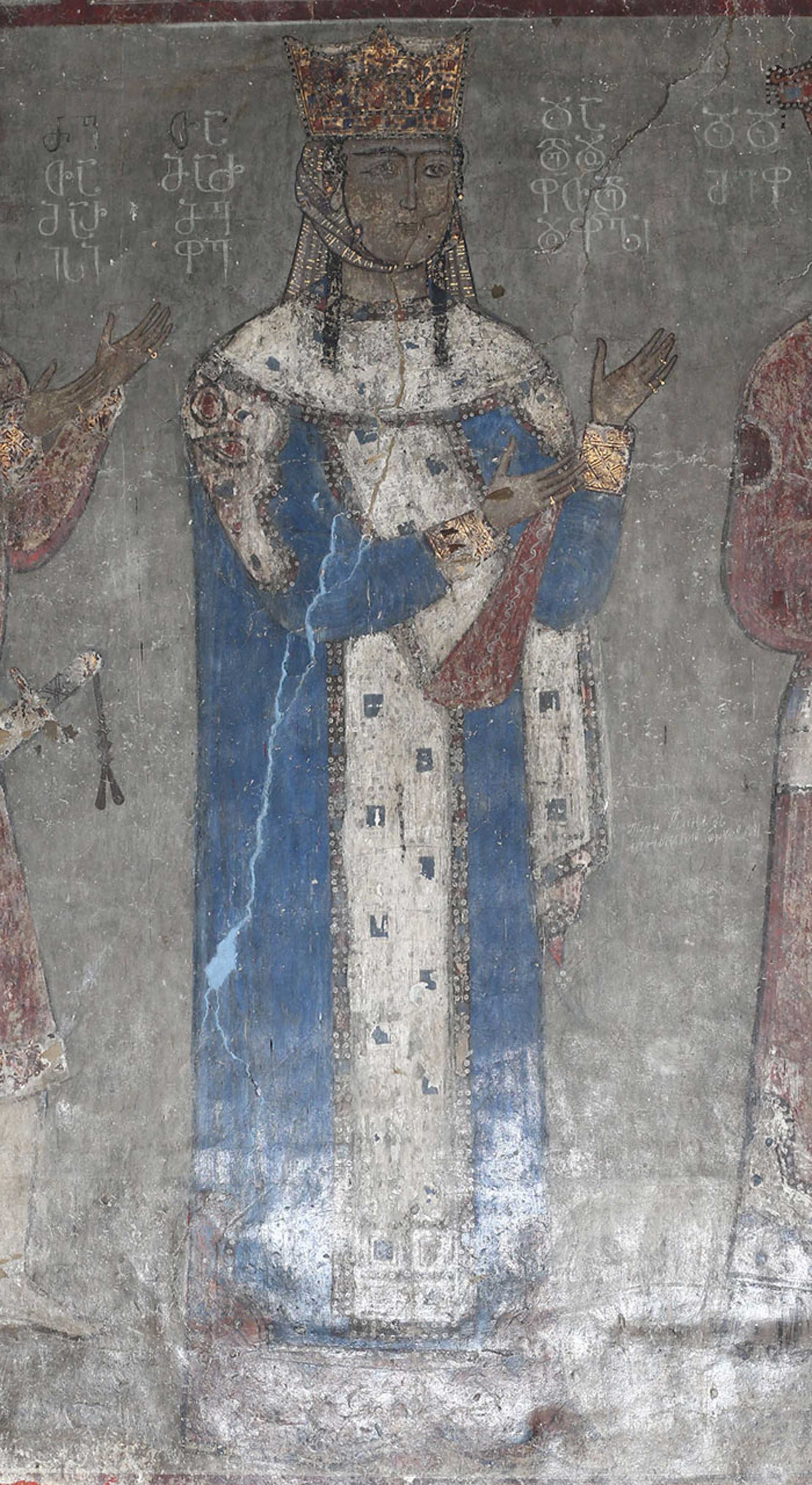
Feel free to add tags, names, dates or anything you are looking for



1. Vardzia. Church of the Dormition. Portrait of Queen Tamar.
2. Kintsvisi. Church of St. Nicholas. Portrait of Queen Tamar.
3. Betania. Church of the Virgin. Portrait of Queen Tamar.
Medieval Georgian art has preserved numerous portraits of historical figures. We encounter them on the façades and wall paintings of churches, in icons. Portraits of King Tamar (1184-1213) are significantly important due to their historical and artistic value. Tamar holds a unique place in the history of Georgia. She was the first woman to ascend to the royal throne; the period of her reign is considered to be the ‘Golden age’ in Georgian history. It was a time when the country came at height of its political power and cultural efflorescence.
Tamars’ portrait in the Church of the Dormition at Vardzia is the earliest (1184-1186) of her five surviving portraits. She is depicted here along with her father, King Georgi III (1156-1184) standing before the enthroned Virgin and Child. A flying angel holding a scepter is placed above Giorgi III. The scene symbolically represents the divine blessing of the kings. Tamar is shown as an unmarried woman (she first married in 1186), as indicated by the veil worn by unmarried women that drops down to her shoulders behind the crown (other images depict her wearing a so-called kubasti - a headgear worn by married women). King Tamar holds a model of the Vardzia Church in her hands, the construction of which had been begun by Giorgi III and was completed by her.
.jpg)
Vardzia. Church of the Dormition. Queen Tamar and Giorgi III. Photo by G. Chubinashvili. National Research Centre
The portraits of King Tamar in the Betania Church of the Virgin and the Kintsvisi St. Nicholas Church are created slightly later (at the beginning of the 13th century). They are quite similar. Tamar still stands after her father, but this time her son –Giorgi Lasha (Giorgi IV, 1207-1223) is also portrayed standing next to Tamar. The Kintsvisi panel shows the royals standing in prayer before the image of enthroned Christ, who is turned toward them with extended right hand in blessing, while in Betania the royal portraits are flanked by the frontal figures of the holy warriors.

Kintsvisi. Church of St. Nicholas. Queen Tamar and Giorgi III. Detail. Photo by M. Kiladze.

Betania. Church of the Virgin. Giorgi III, Queen Tamar, Giorgi Lasha IV Lasha. Photo by Z. Tsertsvadze
It is worthy of note that by the time these three portraits were created, Giorgi III had already passed away, but depicting her together with her father was important to Tamar. This even had a political connotation. In the Middle Ages it was not common practice to enthrone a female and Tamar’s coronation was met with much opposition. Depicting herself together with King Giorgi III was a visual expression of the legitimacy of the royal power Tamar had inherited from her father. She appears equal to her father. King Tamar and King Giorgi III are represented in almost identical imperial dresses, both are crowned in Vardzia they even have the same crowns. Tamar is referred to as King and not Queen in the inscriptions accompanying the portraits, which makes her equal to the King (a man).
In the wall paintings (1st quarter of the 13th century) of the Virgin Church of the Bertubani Monastery at Davitgareji King Tamar is represented with her son Giorgi IV Lasha in supplication before the enthroned Virgin with the Child (This portrait is preserved in the State Museum of Art). The portrayal of Giorgi-Lasha next to Tamar had the same significance as depicting Tamar following his father.

Bertubani Monastery. Church of the Virgin. Queen Tamar before the Virgin. Detail. Photo by Chubinashvili National Research Centre
The portrait in the Main Temple painting of Natlismtsemeli Monastery (Monastery of St. John the Baptist) at Davitgareji differs greatly from King Tamar’s other images. This time Tamar is represented in the scene of Coronation of Giorgi IV Lasha. Severely damaged composition includes King Tamar, her spouse Davit Soslani, and their son Giorgi-Lasha standing between them, all in royal robes. Originally, there had been an image of Christ above Giorgi- Lasha, placing the royal crown on his head. The Church was painted at the beginning of the 13th century.

Main Church of the Natlismcemeli Monastery. Coronation of Giorgi IV Lasha. Photo by G. Chubinashvili National Research Centre.
All portraits of King Tamar show her as a young woman with a roundish face, almond-shaped eyes, long arched eyebrows, and small straight nose; But in Vardzia she has a more characteristic appearance. Kintsvisi portrait is distinguished by its grandeur and emotionality, its exquisite manner of execution. Each image represents King Tamar in her glory. She is crowned and haloed, and her imperial dress is richly embellished with ornaments and precious stones. Despite the damage of the Kintsvisi murals the remains of gold leaf once covering Tamar’s and Giorgi’s robes and haloes are still visible.

Vardzia. Queen Tamar. Detail

Betania. Queen Tamar. Detail
The royal portraits are situated in the lower register of all churches. They are distinguished by their festive and monumental character.